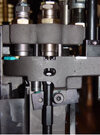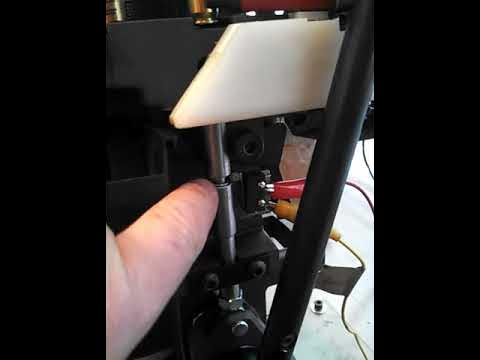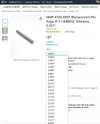ballman6711
Member
Do your calipers zero okay?
I was about to ask the same question.
Could that be the no go end?
chris
Do your calipers zero okay?
Don’t like the swager method and wish I hadn’t bought my Frankford standalone


Nope you were rightDo your calipers zero okay?
Just zeroed them I was only off by .200”I was about to ask the same question.
Could that be the no go end?
chris

It actually looks like closer to .2085”Okay, so no burrs or dings. That’s good.
The second thing is your go gauge is bigger in diameter then the min dimension SAAMI calls out on the print.
So your pic -.200 puts you .0005 larger then the smallest diameter on the print.
Great to know. Really great to know. Thanks for taking the time to check.I just measured about 20 of my Winchester 45acp cases and all of the pockets measured from the minimum .2085 to .209 and the Go side of the Gauge did not want to enter about half of them. Since they all prime okay and meet SAAMI specifications I call it a win because I want tight primer pockets.
Yes, do what you feel is best for your rounds.Great to know. Really great to know. Thanks for taking the time to check.
Now I have to decide if I’m Goldilocks
Would you believe my original plan for this thread was something like “Do your primers seat even when your pocket primer gauge doesn’t fit?” SeriouslyIn the past I’ve had people bring me parts from inspection saying they don’t pass, only to find the inspection tooling damaged.
That’s why I wanted you to inspect the gauge for a ding or burr, it happens.
If you measure the NoGo side of your gauge you probably find it at .211” which is larger than SAAMI maximum specs of .210”. This means the pocket has to be larger then specification before the pin will go in by at least .001.
Maybe the calipers were zeroed .2” off after you took those measurements.Now I just have to figure out why my case length measurements were accurate yet calipers weren’t zeroed.
I just know I didn’t do it intentionally maybe did something when I changed battery.Maybe the calipers were zeroed .2” off after you took those measurements.
Maybe the calipers were zeroed .2” off after you took those measurements.

I also find gauge pins to be very useful in reloading and in measuring chambers, bores, etc…I don’t really like using calipers to measure holes, at least if I am trying to measure them with precision.
You don’t have to zero a gauge pin and it has no batteries to die and if it goes in, anything else round and that diameter will too.
You also don’t need a full set if you are only wanting a narrow range. Just buy the sizes you want, individually.
They don’t lie or require much technique to properly utilize.
Got it and the reamer’s taper is a safeguard of sortsIf you do modify the primer pockets, please remember that the gauge you have is .0005” off on the small side and .001” on the large side.
Go .209” NoGo .211”
SAAMI .2085”~.210”
My point is that the gauge won’t help you in verifing that you’re not reaming the pockets too large per SAAMI specification.
You need a micrometer for that measurement
Well it doesn’t surprise me one bit you did this. I’m in a very low production, once and done situation.I am not a big fan of swaging as an extra step either, it’s almost as bad as uniforming primer pockets by hand…
Before I setup a 1050 for 45 ACP, I used to cull S&B brass because the tight pockets felt different seating primers and it messed up my rhythm. I loaded them as a group, they all felt the same and I was happy.
With the 1050 and it’s built in swager at #3 they all feel the same, without any additional work.
View attachment 1176397
I then doubled down and made my own swage rod that would also detect SPP and cull them as I loaded.

Small primer pocket culler.
www.youtube.com
This is what made me laugh, I liked the rest of your post.Correcting the pockets that don’t gauge was no big deal until I got hairbrained idea of starting a forum thread to talk about it.
I don’t really like using calipers to measure holes, at least if I am trying to measure them with precision.
You don’t have to zero a gauge pin and it has no batteries to die and if it goes in, anything else round and that diameter will too.
You also don’t need a full set if you are only wanting a narrow range. Just buy the sizes you want, individually.
They don’t lie or require much technique to properly utilize.
View attachment 1176406
Link
What diameter are you going to ream them to?Well it doesn’t surprise me one bit you did this. I’m in a very low production, once and done situation.
I selected an arbitrary number (300ish) of Winchester cases to see how long they’d last. I take each case and hand prep them including gauging primer pockets. Each step is again, one and done.
Correcting the pockets that don’t gauge was no big deal until I got hairbrained idea of starting a forum thread to talk about it.
To the SAAMI spec of courseWhat diameter are you going to ream them to?
